#Tunisian poet
Photo

Leila Chatti, from Deluge; “Portrait of the illness as nightmare”
[Text ID: “Your heart hisses in its cage.”]
#leila chatti#excerpts#writings#literature#poetry#fragments#selections#words#quotes#lit#typography#poetry collection#american tunisian poets#american literature#american poetry
3K notes
·
View notes
Text
sometimes i think of yusuf, at the beginning. poet son of a merchant boy in borrowed armour, skull cracked open on a rock. how long until he returns home again? How does he return, estranged, to those Ithica-like Tunisian shores? Can his father still recognize his covered face?
yusuf al-kaysani, the son, the poet, the not-soldier, made and unmade each night in the looms of his mother's memory, mindbody woven and unwoven by something infinite and nameless.
sometimes i think about "di genova" vs. "al-kaysani". a land versus a bloodline. How they lose both, and then the names, too. immortal odysseus, ogygia-bound, longing to see the smoke that rises from his homeland, longing for death, kept in the soft-tender company of his murderer.
(really, you were founded on the bloody rock of holy ground. really, sometimes there is no return from war. at least not from this. not from the way he touches you.)
485 notes
·
View notes
Photo


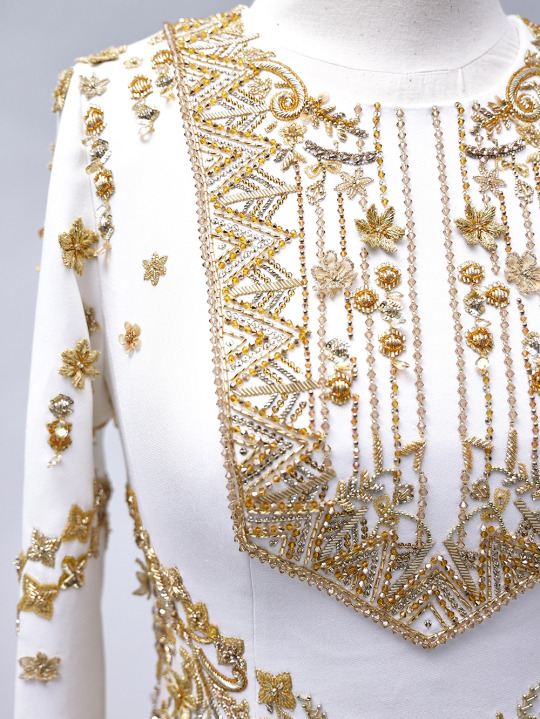
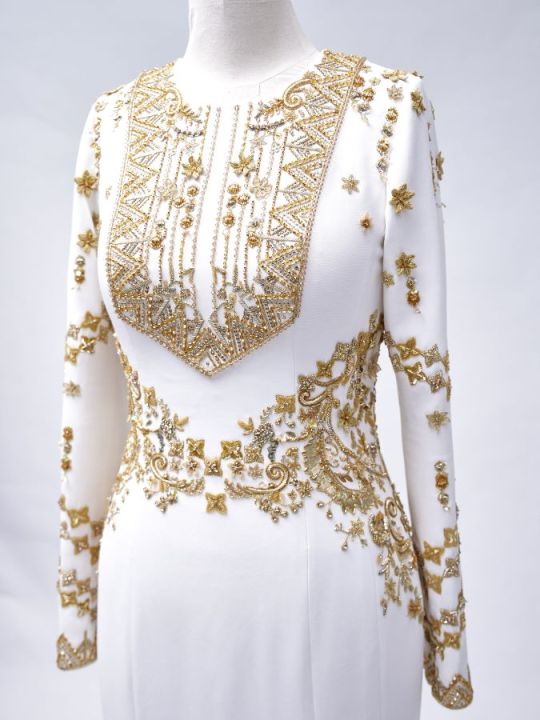


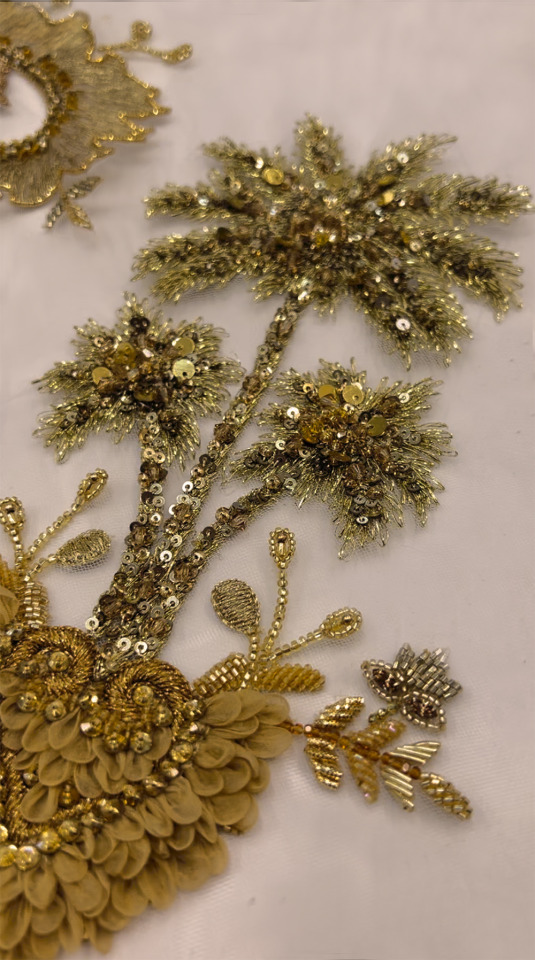


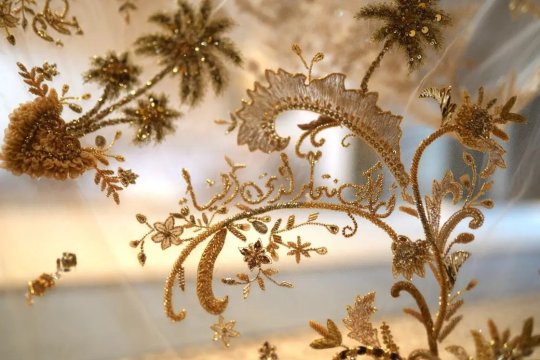
Close-up of Rajwa Al Saif's henna party outfit on 22 May 2023. The dress, by Saudi designer Honayda Serafi, took more than 2,000 hours to create, and includes several hidden messages of love, Vogue Arabia reports.
“Crafted by Saudi designer Honayda Serafi, Al-Saif’s henna dress is a vision in white and gold. The future queen of Jordan celebrated with family and friends in a look that takes inspiration from the traditional Najdi dress, known as Sahabi thoub, which originates from the Najd region of the Kingdom of Saudi Arabia. Keeping in mind the occasion and the family, Serafi made sure to combine the cultural beauty of the Hashemite kingdom of Jordan and the Kingdom of Saudi Arabia to celebrate the union of Rajwa and Prince Hussein beautifully.
Featuring a handcrafted veil and dress, Rajwa Al-Saif’s pristine white henna outfit comes doused in 3D ornaments, made using a mix of silk, metallic threads and traditional reed strings (a signature element of Najdi embroidery). To create this masterpiece, Honayda Serafi took cues from the bride’s personality, attempting to reflect her innate grace, the rich traditions of her land, and her contemporary spirit.
Look closely, and you’ll notice that Al-Saif’s gown is replete with lovingly made details. Featuring a high round neck and full sleeves, the crepe gown features an inverted triangle-shaped bodice that is inspired by the traditional Najdi bodice design, normally worn as a separate piece. As the body-skimming gown continues, it flares out towards the ankles to create a mermaid-esque shape. The bodice of the gown is elevated using embroidery: soft organza flowers share space with geometric shapes and Arabic motifs, all of which are typical to Saudi Arabia and reflect the beauty and traditions of the bride’s homeland.
Rajwa Al-Saif’s veil has also been embroidered with meaningful designs, making this piece so personal to her journey. Seven Jordanian stars adorn her veil to signify the seven-pointed star that sits proudly on the Jordanian flag. What makes this symbol even more special is its religious meaning: The star on the Jordan flag signifies the seven verses in the opening chapter of the Holy Qur’an, and the seven mountains of Amman.
Along with the stars, the veil also features intricate palm trees as a reference to Saudi Arabia, and even some poetry. The words “I see you, and life becomes more beautiful” have been embroidered into Al-Saif’s veil, from Tunisian poet Abu al-Qasim al-Shabi, known for his Andalusian notes. If you’re a fan of Rajwa Al-Saif’s elegant wardrobe, you may already know that the bride-to-be has a soft spot for special symbols when it comes to her clothing. Back in August 2022, when Rajwa was officially engaged to Prince Hussein, she also commemorated the occasion with her clothing—an abaya that was embroidered with two gold birds, symbolizing two souls in love.”
The veil took 760 hours to complete
An exquisite piece of couture requires hours of effort, and Rajwa Al-Saif’s henna outfit is no different. According to the designer, Al-Saif’s veil took 760 hours to complete, and was worked on by a team of experts, craftsman and women. Extending to 10 meters, the piece was made using handcrafted tulle, a process that normally takes close to 2,000 hours of work. As for her billowing gown, the creation is the result of 340 hours of work.
Honayda Serafi: “I am very proud and honored to be part of this historic union”
Speaking on the occasion, Serafi shared, “I am very proud and honored to be part of this historic union between His Royal Highness, Crown Prince Al Hussein bin Abdullah II of the honorable Hashemite family, and Miss Rajwa Khalid Alseif. May they be blessed with happiness and their union be crowned with success.” (x)
801 notes
·
View notes
Text

Hosni Radwan, 1980
Arabic: ولا بد القيد ان ينكس
English: The chains must [inevitably] break
(A famous line from Tunisian poet Abu Al-Qasim Al-Shabbi's The Will to Life)
[ID: A poster illustration depicting a keffiyeh hanging out of a barred prison window. The window frame is cracked and the bars are in the process of transforming into leafy green shoots, with the keffiyeh's pattern extending onto them. The background is a brown-orange-yellow gradient, with orange Arabic text at the top. /end ID]
32 notes
·
View notes
Photo

“Rajwa's Henna custom-made dress was spectacular! I love all of the details that the designer Honayda Serafi incorporated in the design, including a verse by Tunisian poet Abu Al Qasim Al Shabi. Embroidered in gold, the Arabic verse translates to read: "When I see you, life becomes more beautiful" — adding a personal touch to Rajwa Al Saif's henna celebration gown.” - Submitted by Anonymous
62 notes
·
View notes
Note
AMAL I am also fluent in Arabic and it makes me so happy someone else on here is as well!!! I have such an appreciation for it and I’m trying every day to expose myself to Arabic lit :) anyway learning ur native language is Arabic made me so happy so just dropping in to give u my appreciation and love and also all the blessings in the world <333
CIANNA ohhh my god i didnt know that!! thats so so cool hii fellow arabic speaker <3 it’s such a beautiful magical language isn’t it!! my love for literature and poetry started from reading mahmoud darwish and nizar qabbeni and abu al kacem echebbi (a tunisian poet who had a deep love for nature and people and love<3) and i couldn’t be more grateful to be able to read their words in the language they intended them to be🥹 im sending you sooo much love and joy love u so much🌷🫶
24 notes
·
View notes
Text

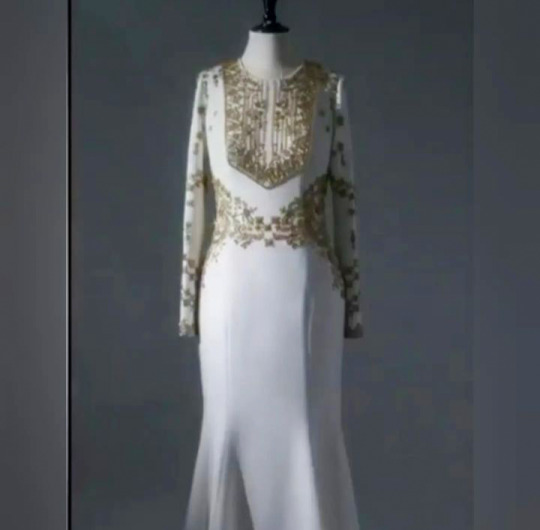
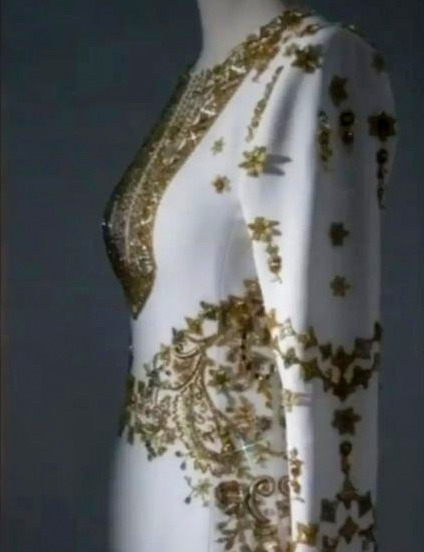




Details about Rajwa's Henna Dress :
It was conceived by Saudi designer Honayda Serafi.
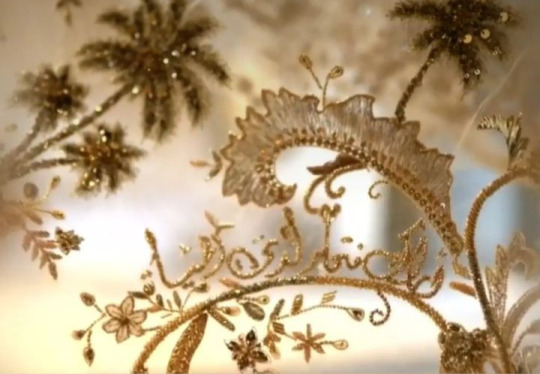
The gold embroidery is inspired by both Jordanian and Saudi cultures:
-The palms are the emblem of Saudi Arabia.
-It is said that it contains "Eight Point Star" embroidery, the same star that features on the Jordanian flag.
-It also contains a famous Tunisian verse written by Poet " Abu El Qacem Chabbi " :
"I see you , and life becomes sweet "
15 notes
·
View notes
Text

" EVERY WORD I WRITE CALLS YOUR NAME "
In every verse I pen, your name takes flight,
Whispered softly, carried on love's sweet breeze,
Within the lines that dance upon my page,
Your essence weaves through syllables with ease.
Each word, a tender whisper, longs to touch,
To graze your heart and gently sway your soul,
A symphony of letters, neatly placed,
Creating lyrics only you can know.
With every stroke of pen, I feel your touch,
Each letter etched upon my poet's heart,
Like magic ink that binds our souls as one,
The very essence of our love, true art.
And as I write, it's you who grants me wings,
To soar beyond the confines of my mind,
With every word, our story takes its flight,
In lyrics pure, our love forever signed.
So let each letter resonate its truth,
And every verse be but a love's refrain,
For in each word, my sweetest love, I find,
Your name, forever echoed in each strain.
My name on your Tunisian breeze, so sweet and airy;
it softly dances as far as I can see;
Further than the land and miles across the sea;
everywhere I go, your butterflies follow me.
My intimate lines of love, so free and poetic;
my heart takes off and soars close to the sky;
Weaving through the air like eagles flying high;
a perfect fanfare of love, displayed and eclectic.
Your name in verse, a soft awakening;
an ode of love, that my heart is bringing;
Forever burns, love's eternal flame;
my dreams of days of us still remain.
We whisper softly, our secrets we must breathe in;
our destinies united in accident, some might say sin;
Defeated all the odds, our hearts should win;
our love will 'til the very end, be carried within.
Call my name again, it carries me in flight;
I feel you there, so close, even when out of sight;
Our silent promises, they fade but not our might;
the love we share will be here forever not just tonight.
Weaving through our poetic lines, is a story untold.
Tracing along the curves, of life's sojourns bold
Never finished, just like our most wonderful lives
Weaving through these lines, of joy and strife.
A collaboration between two special friends...
© Myriam Ghezaïl Ben Brahim ❤️🥀 and
© Geoff Stockton ❤️🥀
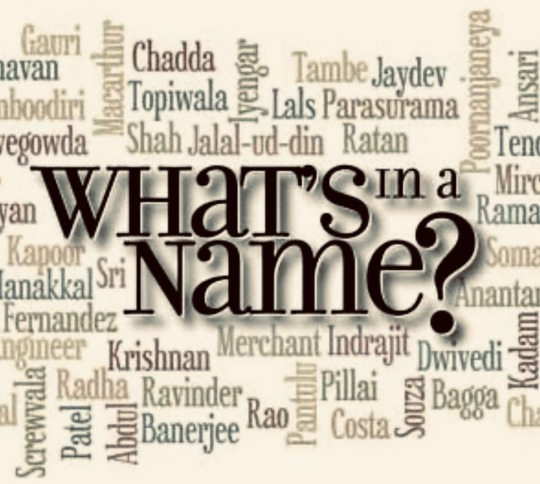
8 notes
·
View notes
Audio
Badiâa Bouhrizi - KahruMusiqa - first collection of her electronic music, recorded 2004-2011
KahruMusiqa is a musical retrospective of Badiâa Bouhrizi AKA Neysatu one of the first Tunisian female electronic music producer. Almost eighteen years of music produced in London, Tunis and Paris. She is known as the writer behind protest songs that became hymns of the Tunisian revolution, like Labess. But only a handful knows that she also composed and produced their music.
KahruMusiqa means electronic music, but is never used as such in Arabic to name the genre. The record is a collection of sonic experimentations that started when she first got her hands on music production software in the 2000s. They are based on poems in classical Arabic language or Tunisian dialect written by Badiâa herself or female poets she admires, such as the Palestinians Fadwa Tuqan or Salma Al Jayusi, or the Tunisian poet Noureddine Werghi. Most of the vocal work are improvisations recorded with a computer microphone. A take on the classic Turkish Folk song Muhabbat is almost a modern harmonic rewriting, using only classical guitar, vocals and delays.
The themes present in KahruMusiqa are in line with Badiâa Bouhrizi ideological trajectory. She is a queer woman in the moving sands of Tunesia in the song Transfemale Touness Al Mouta7arrika. She also questions the political contract that led to Balfour and the displacement of millions of Palestinians in 1948, describing a journey between London and Nablus, in Fil Madinatil harima (“In The Old City").
Her metrics, sound scape and melodies are strongly influenced by traditional African and Arabic music.
This lo-fi bedroom album also displays several songs that have become classics of the Arab underground milieu like Ila Selma, and is the first ever record Badiâa Bouhrizi was willing to release.
Produced and performed by Badiâa Bouhrizi
Recorded in Tunis/ Paris/London/ Montréal between 2004 and 2011
17 notes
·
View notes
Quote
Aren’t you just as tired of the fear within me? I am the tree that trembles and trembles.
Leila Chatti, from Deluge; “Deluge”
#leila chatti#excerpts#writings#literature#poetry#fragments#selections#words#quotes#lit#poetry collection#american literature#american poetry#american tunisian poets#fear
845 notes
·
View notes
Text

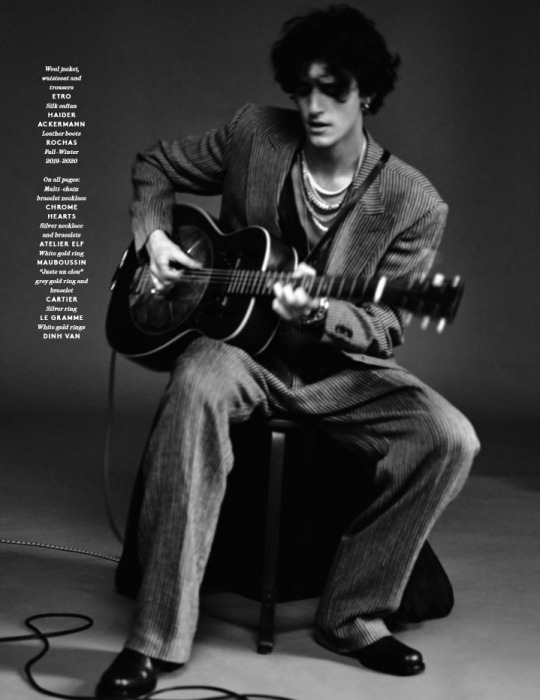

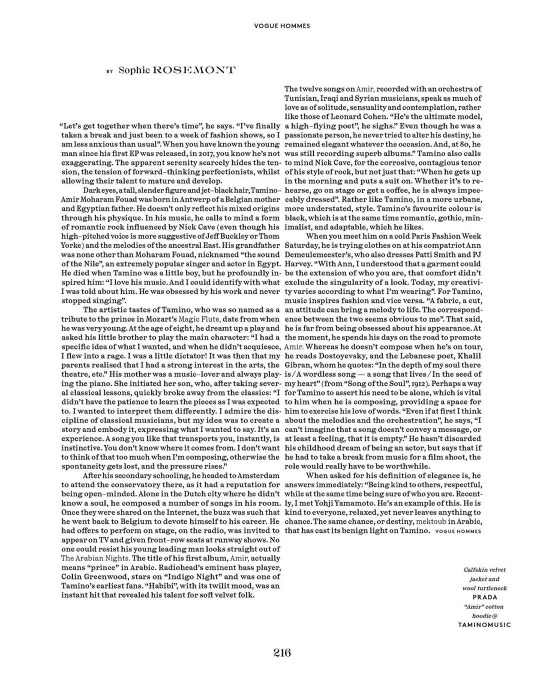



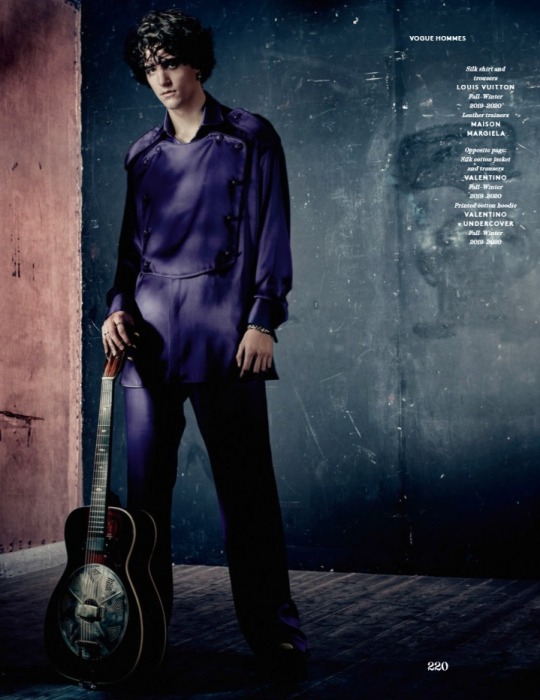
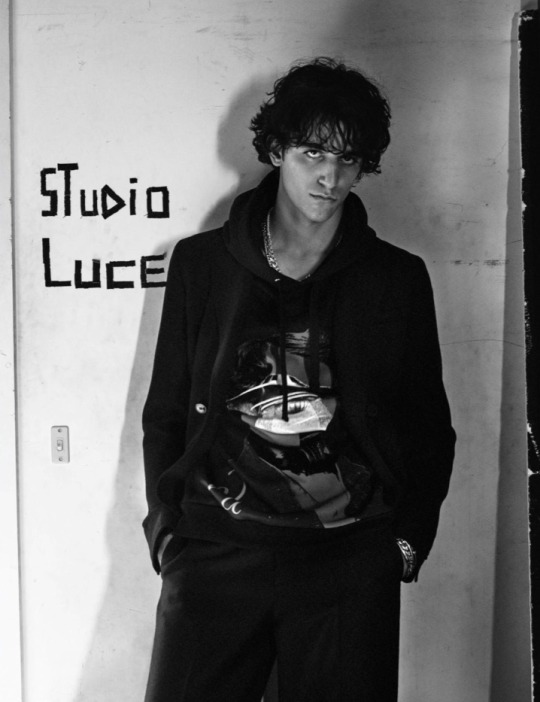


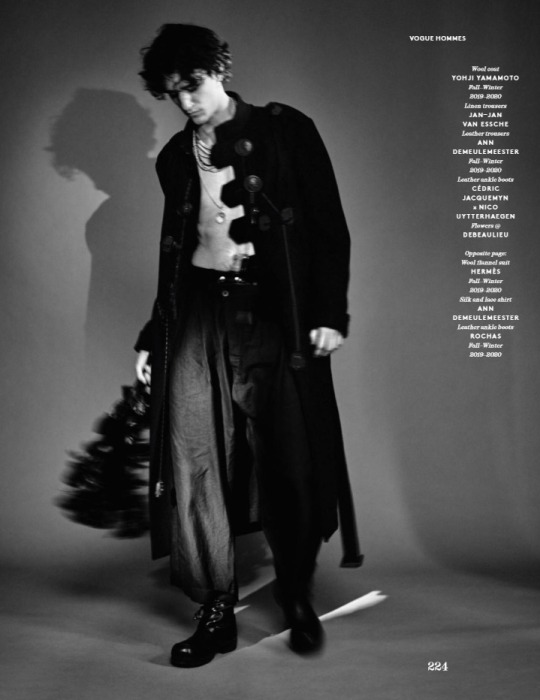


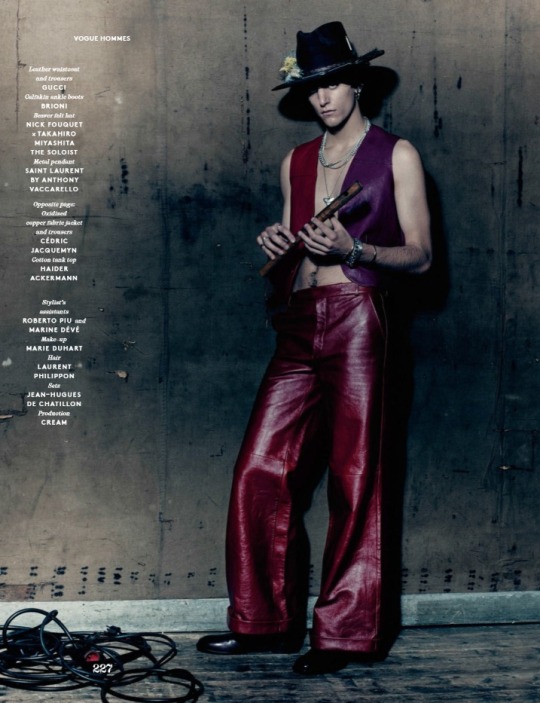
— Tamino for Vogue Hommes, Spring / Summer 2019 (x)
Prince of Melancholy
By Sophie Rosemont / Photographed by Paolo Roversi / Styled by Anastasia Barbieri
‘Let’s get together when there’s time,’ he says. ‘I’ve finally taken a break and just been to a week of fashion shows, so I am less anxious than usual’. When you have known the young man since his first EP was released, in 2017, you know he’s not exaggerating. The apparent serenity scarcely hides the tension, the tension of forward-thinking perfectionists, whilst allowing their talent to mature and develop.
Dark eyes, a tall slender figure and jet-black hair, Tamino-Amir Moharam Fouad was born in Antwerp of a Belgian mother and Egyptian father. He doesn’t only reflect his mixed origins through his physique. In his music, he calls to mind a form of romantic rock influenced by Nick Cave (even though his high-pitched voice is more suggestive of Jeff Buckley or Thom Yorke) and the melodies of the ancestral East. His grandfather was none other than Moharam Fouad, nicknamed ‘the sound of the Nile’, an extremely popular singer and actor in Egypt. He died when Tamino was a little boy, but he profoundly inspired him: ‘I love his music. And I could identify with what I was told about him. He was obsessed by his work and never stopped singing.’
The artistic tastes of Tamino, who was so named as a tribute to the prince in Mozart’s Magic Flute, date from when he was very young. At the age of eight, he dreamt up a play and asked his little brother to play the main character: ‘I had a specific idea of what I wanted, and when he didn’t acquiesce, I flew into a rage. I was a little dictator! It was then that my parents realized that I had a strong interest in the arts, the theater, etc.’ His mother was a music-lover and always playing the piano. She initiated her son, who, after taking several classical lessons, quickly broke away from the classics: ‘I didn’t have the patience to learn the pieces as I was expected to. I wanted to interpret them differently. I admire the discipline of classical musicians, but my idea was to create a story and embody it, expressing what I wanted to say. It’s an experience. A song you like that transports you, instantly, is instinctive. You don’t know where it comes from. I don’t want to think of that too much when I’m composing, otherwise the spontaneity gets lost, and the pressure rises.’
After his secondary schooling, he headed to Amsterdam to attend the conservatory there, as it had a reputation for being open-minded. Alone in the Dutch city where he didn’t know a soul, he composed a number of songs in his room. Once they were shared on the Internet, the buzz was such that he went back to Belgium to devote himself to his career. He had offers to perform on stage, on the radio, was invited to appear on TV and given front-row seats at runway shows. No one could resist his young leading man looks straight out of The Arabian Nights. The title of his first album Amir, actually means ‘prince’ in Arabic. Radiohead’s eminent bass player, Colin Greenwood, stars on ‘Indigo Night’ and was one of Tamino’s earliest fans. ‘Habibi,’ with its twilit mood, was an instant hit that revealed his talent for soft velvet folk.
The twelve songs on Amir, recorded with an orchestra of Tunisian, Iraqi and Syrian musicians, speak as much of love as of solitude, sensuality and contemplation, rather like those of Leonard Cohen. ‘He’s the ultimate model, a high-flying poet,’ he sighs. ‘Even though he was a passionate person, he never tried to alter his destiny, he remained elegant whatever the occasion. And, at 80, he was still recording superb albums.’ Tamino also calls to mind Nick Cave, for the corrosive, contagious tenor of his style of rock, but not just that: ‘When he gets up in the morning and puts a suit on. Whether it’s to rehearse, go on stage or get a coffee, he is always impeccably dressed.’ Rather like Tamino, in a more urbane, more understated, style. Tamino’s favorite color is black, which is at the same time romantic, gothic, minimalist, and adaptable, which he likes.
When you meet him on a cold Paris Fashion Week Saturday, he is trying clothes on at his compatriot Ann Demeulemeester’s, who also dresses Patti Smith and PJ Harvey. ‘With Ann, I understood that a garment could be the extension of who you are, that comfort didn’t exclude the singularity of a look. Today, my creativity varies according to what I’m wearing.’ For Tamino, music inspires fashion and vice versa. ‘A fabric, a cut, an attitude can bring a melody to life. The correspondence between the two seems obvious to me.’ That said, he is far from being obsessed about his appearance. At the moment, he spends his days on the road to promote Amir. Whereas he doesn’t compose when he’s on tour, he reads Dostoyevsky, and the Lebanese poet, Khalil Gibran, whom he quotes: ‘In depth of my soul there is / A wordless song – a song that lives / In the seed of my heart’ (from ‘Song of the Soul’, 1912). Perhaps a way for Tamino to assert his need to be alone, which is vital to him when he is composing, providing a space for him to exercise his love of words. ‘Even if at first I think about the melodies and the orchestration,’ he says, ‘I can’t imagine that a song doesn’t convey a message, or at least a feeling, that it is empty.’ He hasn’t discarded his childhood dream of being an actor, but says that if he had to take a break from music for a film shoot, the role would really have to be worthwhile.
When asked for what his definition of elegance is, he answers immediately: ‘Being kind to others, respectful, while at the same time being sure of who you are. Recently, I met Yohji Yamamoto. He’s an example of this. He is kind to everyone, relaxed, yet never leaves anything to chance.’ The same chance, or destiny, mektoub in Arabic, that has cast its benign light on Tamino.
29 notes
·
View notes
Text
[ad_1]
In a various and multicultural music scene, the songs of the 2022 FIFA World Cup in Qatar have emerged as a typical language that transcends the variations between peoples and civilizations and extends the bridges of communication, rapprochement and data between the completely different cultures.
The songs are primarily based on a western musical background with the melody of genuine oriental phrases, by which dozens of singers, musicians, performers, producers and writers have participated who come from completely different backgrounds and cultures and signify a number of nationalities.
Since singing is a typical world language understood by all human beings and a full of life and vibrant a part of folks's lives, the Qatar World Cup songs had been a fast and nice solution to combine various kinds of music, to carry cultures and civilizations nearer collectively and to create widespread and significant hyperlinks.
The World Cup songs had been represented within the official music launched by the Worldwide Soccer Affiliation "FIFA" (FIFA), which included for the primary time within the historical past of the World Cup an entire album and never only one. tune, as was the case in earlier editions of the event, along with native works introduced by the Qatar Media Basis, in addition to particular person messages from artists.
The official music of the World Cup goals to carry artists, followers and gamers collectively and share their ardour by mixing varied types of music - as a world language - and soccer to realize an efficient constructive influence.
[embed]https://www.youtube.com/watch?v=vyDjFVZgJoo[/embed]
come on
The official music of the World Cup in Qatar was featured within the songs "Come on, come on" introduced by American star Trinidad Cardona, well-known African singer Davido and Qatari artist Aisha, because it symbolizes the power of music and soccer to unite the world, in gentle of its mixture of an American, an African and a 3rd Center Japanese voice.
In addition to the tune "Welcome", whose title is impressed by the native language and Arabic tradition, and which is interpreted by the French Mitter James and Ozona from Puerto Rico. The tune itself was launched in Arabic by Qatari Nasser Al-Kubaisi, Saudi Ayed Yousef and Kuwaiti Hanin Hussein Diameter.
And in addition the tune "Qanadeel al-Samaa", by which 4 Arab artists participated, specifically: the Yemeni Balqis Fathi, the Moroccan-Canadian Noura Fathi, the Iraqi Rahma Riad, along with the Moroccan Manal, and celebrates the feminine referees who will take part within the administration of World Cup matches.
[embed]https://www.youtube.com/watch?v=C-sToIRYZEo[/embed]
world cup floor
Different songs had been additionally launched for the World Cup in Qatar, together with "The Land of the World Cup" introduced by Qatar Media Company, which is a big creative manufacturing that was filmed in a number of places in Doha, and phrases by Qatari poet Tayseer Abdullah and Qatari melody Mohammed Al-Marzouqi.
The tune, which incorporates various vital messages - amongst them expressing the enjoyment of the World Cup after the difficulties confronted by Qatar - was adopted by Qatari Issa Al-Kubaisi, Moroccan Hatem Ammor, Tunisian Nordo, the Saudis Dalia Mubarak and Abdulaziz Al-Alawi, and it carries the contents of the greeting and welcome on behalf of all Arabs to the company of the World Cup.
The Basis additionally launched the cheering tune for Annabi, "Belhem pour le haut, Annabi" for younger singer Ashjan, with the participation of a number of youngsters, which goals to help and help the nationwide workforce within the World Cup.
Qatari author Tayseer Abdullah explains that the tune "Land of the World Cup" carries quite a lot of messages, the primary is that the World Cup is for all Arabs, not simply Qatar, and the second is that the event has been by way of nice circumstances and difficulties, together with the plight of the Corona virus and the organizations
focusing on the World Cup in Qatar to this point, and the third is the game embodied in Selling probably the most stunning ball.
[embed]https://www.youtube.com/watch?v=dpoBgIqs4rs[/embed]
Abdullah stated in an announcement to Al Jazeera Internet that the tune options completely different musical kinds introduced by Qatari composer Mohammed Al Marzouki, and mixes Qatar's sea and land heritage within the musical phrase, in addition to elements of the fashionable and rap songs launched world wide.
He factors out that the final introduction of the tune is to talk on behalf of Arabs, and to attempt to combine completely different cultures, but it surely included singers representing the Arab groups that certified for the World Cup.
The Qatar Media Company will current 3 musical works within the coming interval as a part of its coverage to help the Qatar World Cup, together with the tune "Laib" to help the Qatar workforce, however the tune "Terre of the World Cup" is that of the inspiration. important theme, in response to Abdullah.
[embed]https://www.youtube.com/watch?v=IBhyDm9Lwg8[/embed]
everlasting objectives
In flip, Qatari singer Anwar, as a part of the promotional work for the World Cup, launched a duet tune with Argentine artist Christian Hallak titled "Everlasting Targets", and the tune was additionally composed by Hallak.
She additionally introduced a second musical work entitled "Deira Al-Khair", written by the poet Khalifa Jamaan, distributed by Muhammad Al-Marri, composed by Muhammad Al-Banna and performed by Hussein Al-Sayegh, and the work goals to welcome company. of the World Cup in Qatar.
Anwar stated in an announcement to Al Jazeera Internet that she is completely satisfied to be a part of the help for the Qatar World Cup and is able to help her nation always to contribute to its success at completely different instances. ranges.
She explains that the duet tune she introduced with the Argentine singer is explicit and that its goal is to advertise the World Cup, particularly in gentle of its use of Arabic vocabulary such because the desert, Qatar, its landmarks, the oryx and soccer, in addition to speaking concerning the World Cup.
[embed]https://www.youtube.com/watch?v=rbNQCGLauGk[/embed]
She thinks the tune “Deira Al Khair” is the very best description of Qatar and its folks, and its lyrics describe the generosity and hospitality it all the time receives from its company, which shall be appreciated by guests and followers. of the Qatar World Cup.
And the tune “Deira Al-Khair” is 100% Qatari, as it's the lyrics of poet Khalifa Jamaan, broadcast by Muhammad Al-Marri, composed by Muhammad Al-Banna and performed by Hussein Al-Sayegh, in response to Anwar.
The tune "Haya Haya" exceeded 72 million views on YouTube in 7 months, whereas the tune "Welcome" reached 30 million views of the English model and 18 million views of the Arabic model in two months, whereas the tune "Qandeel Al Samaa" surpassed 13 million views in a single month.
The tune “Land of the World Cup” reached two million views in 10 days, whereas the duet tune “Everlasting Targets” exceeded 20,000 views a couple of days after its presentation on YouTube, whereas the tune “Deira Al Khair” was launched final Thursday. night.
[ad_2]
0 notes
Photo



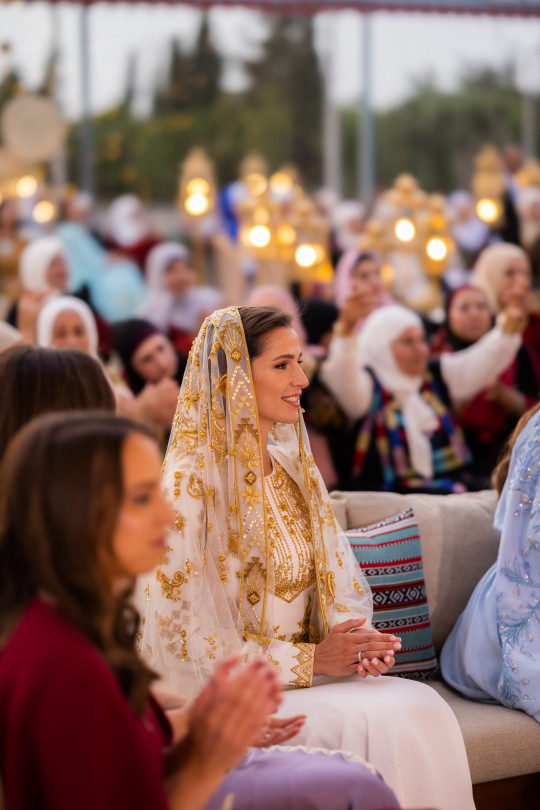
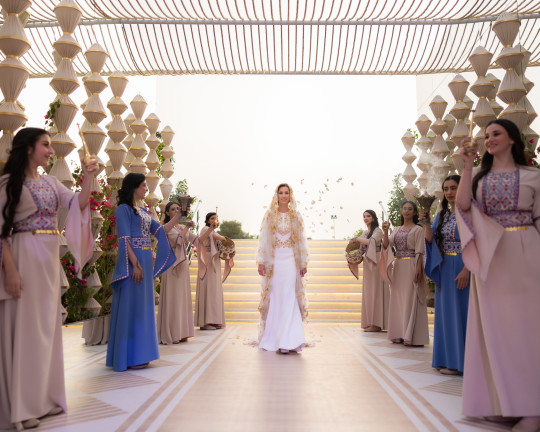


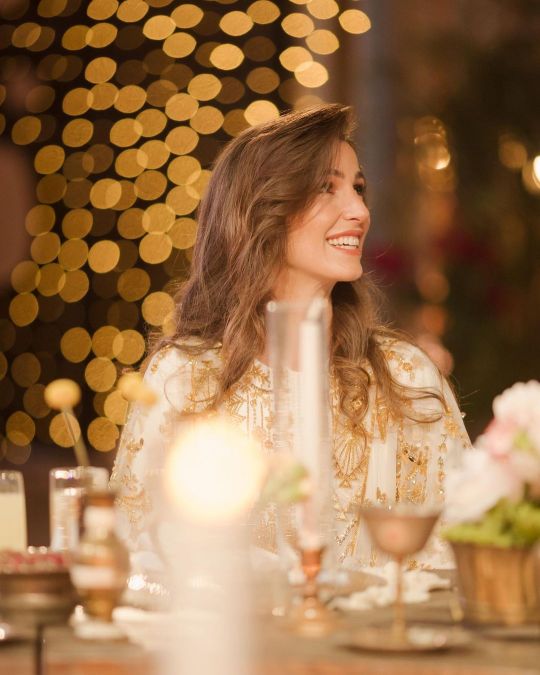
Portraits of Rajwa Al Saif at her henna party, 22 May 2023. Upon entrance, Rajwa is showered with petals & bakhoor. The Saudi bride to be wears dons a white traditional dress with golden silk threads by Saudi designer Honayda Serafi.
Speaking to Al Arabiya, Serafi said that, through the dress, she wanted to “tell the story of this love and to merge between Saudi and Jordanian identities in terms of fashion and culture.” Serafi added that it was also important for her to portray Al Saif’s character and personality through the design which was rooted in history.
Al Saif’s dress is inspired by the traditional thobe of the Najd region which Serafi wanted to execute with a modern take. The dress and overlay resemble the union between Saudi Arabia and Jordan that is happening through this wedding where Serafi noted that she incorporated the seven-pointed star that adorns the Jordanian flag and which reflects the seven Quran verses of Al-Fatiha.
“I also took the palm tree symbol from Saudi Arabia which represents the nerve of life, vitality and giving,” Serafi said, adding that the dress also includes poetry written by Tunisian poet Abu Al-Qasim al-Shabbi. “I am very happy and proud to be part of this historic event,” she added. (x)
227 notes
·
View notes
Text

Kamel Al Mughanni, Melody of Life, 1983
"اذا الشعب يوما اراد الحياة فليس على إرادته قدر"
"If the people are determined to live, fate cannot disturb their determination"
Adapted from the first line of the poem Melody of Life by Tunisian poet Aboul-Qacem Echebbi:
"إِذا الشَّعْبُ يوماً أرادَ الحياةَ فلا بُدَّ أنْ يَسْتَجيبَ القدرْ"
"If the people are determined to live, fate must respond"
10 notes
·
View notes
Quote
Your eyes
are lakes of tenderness
I look into them and see
shadows and lights.
I see the impossible.
How often have I traveled through them
into a world that makes one lose one’s head
as if erring through the museum of marvels !
Noureddine Sammoud (b. Kelibia, 1932), from “The Eyes Of My Love”, translated from Taoufik Baccar & Salah Garmadi’s French version of the original Arabic
in: “Poems for the Millennium. Book of North African Literature”, edited by Pierre Joris and Habib Tengour
66 notes
·
View notes
Text
النّور في قَلْبِي وَبَيْنَ جوانِحي فَعَلامَ أخشى السًّيْرَ في الظَّلْماءِ؟
Transliteration : Ann-nooru fee qalbee wa bayna jawaanihee
fa ‘alaama akhsha as-saayra fith-thalmaa’i
Translation : Light is in my heart and between my wings, so why would I be scared of walking in the dark?
General info : This poem was written by the Tunisian poet “ Aboul-Qacem Echebbi” أبو القاسم الشابي, the title of the poem is نشيد الجبار which is the song of someone who is able to endure great hardships.
Meaning : the poet is saying that, despite all the darkness which is a representation of the difficulties and great hardships that are surrounding him, his heart is still filled with light and hope which gives him the courage he needs to face the darkness surrounding him.
#arabic poems#arabic#Tunisian poet#Arabic language#arabic langblr#I'm sorry there's no audio today ;-; I'm sick and I can't speak clearly...#langblr#tongueblr
192 notes
·
View notes